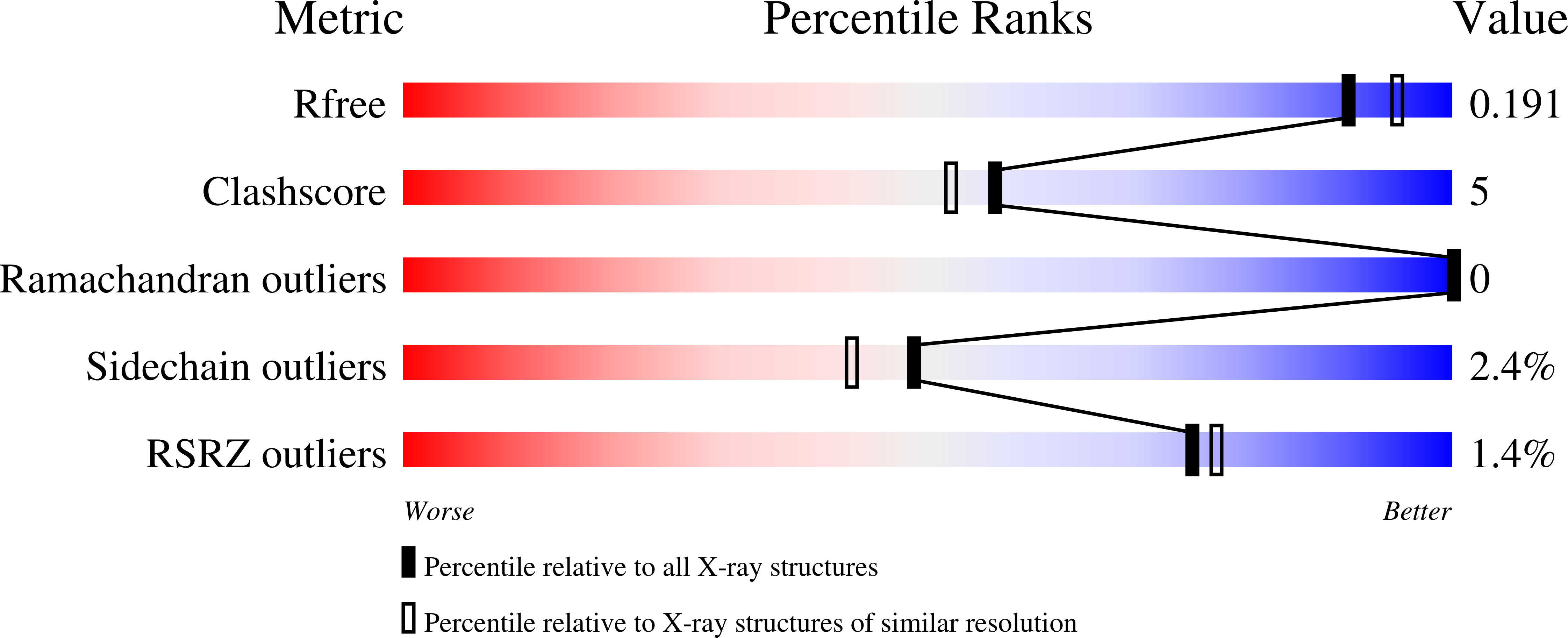Structural Studies on the Pseudomonas Aeruginosa Sialidase-Like Enzyme Pa2794 Suggest Substrate and Mechanistic Variations.
Xu, G., Ryan, C., Kiefel, M.J., Wilson, J.C., Taylor, G.L.(2009) J Mol Biol 386: 828
- PubMed: 19166860
- DOI: https://doi.org/10.1016/j.jmb.2008.12.084
- Primary Citation of Related Structures:
2W38 - PubMed Abstract:
Pseudomonas aeruginosa encodes an enzyme (PA2794) that is annotated as a sialidase (or neuraminidase), as it possesses three bacterial neuraminidase repeats that are a signature of nonviral sialidases. A recent report showed that when the gene encoding this sialidase is knocked out, this led to a reduction in biofilm production in the lungs of mice, and it was suggested that the enzyme recognizes pseudaminic acid, a sialic acid analogue that decorates the flagella of Pseudomonas, Helicobacter, and Campylobacter species. Here, we present the crystal structure of the P. aeruginosa enzyme and show that it adopts a trimeric structure, partly held together by an immunoglobulin-like trimerization domain that is C-terminal to a classical beta-propeller sialidase domain. The recombinant enzyme does not show any sialidase activity with the standard fluorogenic sialic-acid-based substrate. The proposed active site contains certain conserved features of a sialidase: a nucleophilic tyrosine with its associated glutamic acid, and two of the usual three arginines that interact with the carboxylic acid group of the substrate, but is missing the first arginine and the aspartic acid that acts as an acid/base in all sialidases studied to date. We show, by in silico docking, that the active site may accommodate pseudaminic acid but not sialic acid and that this is due, in part, to a phenylalanine in the hydrophobic pocket that selects for the alternative stereochemistry of pseudaminic acid at C5 compared to sialic acid. Mutation of this phenylalanine to an alanine converts the enzyme into a sialidase, albeit a poor one, which we confirm by kinetics and NMR, and this allowed us to probe the function of other amino acids. We propose that a histidine plays the role of the acid/base, whose state is altered through a charge-relay system involving a novel His-Tyr-Glu triad. The location of this relay system precludes the presence of one of the three arginines usually found in a sialidase active site.
Organizational Affiliation:
Centre for Biomolecular Sciences, University of St Andrews, St Andrews, Fife KY16 9ST, UK.















